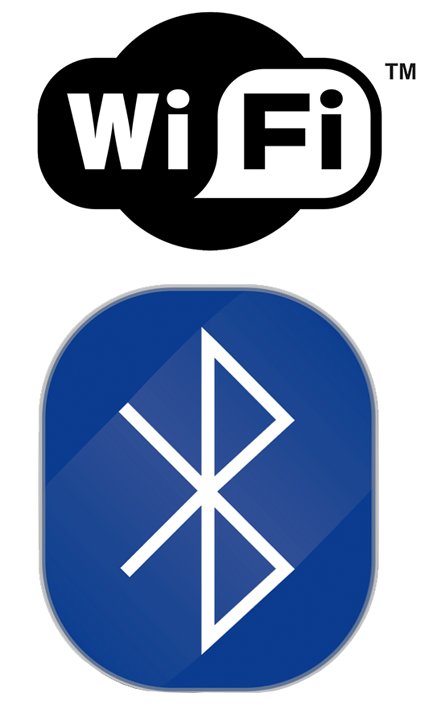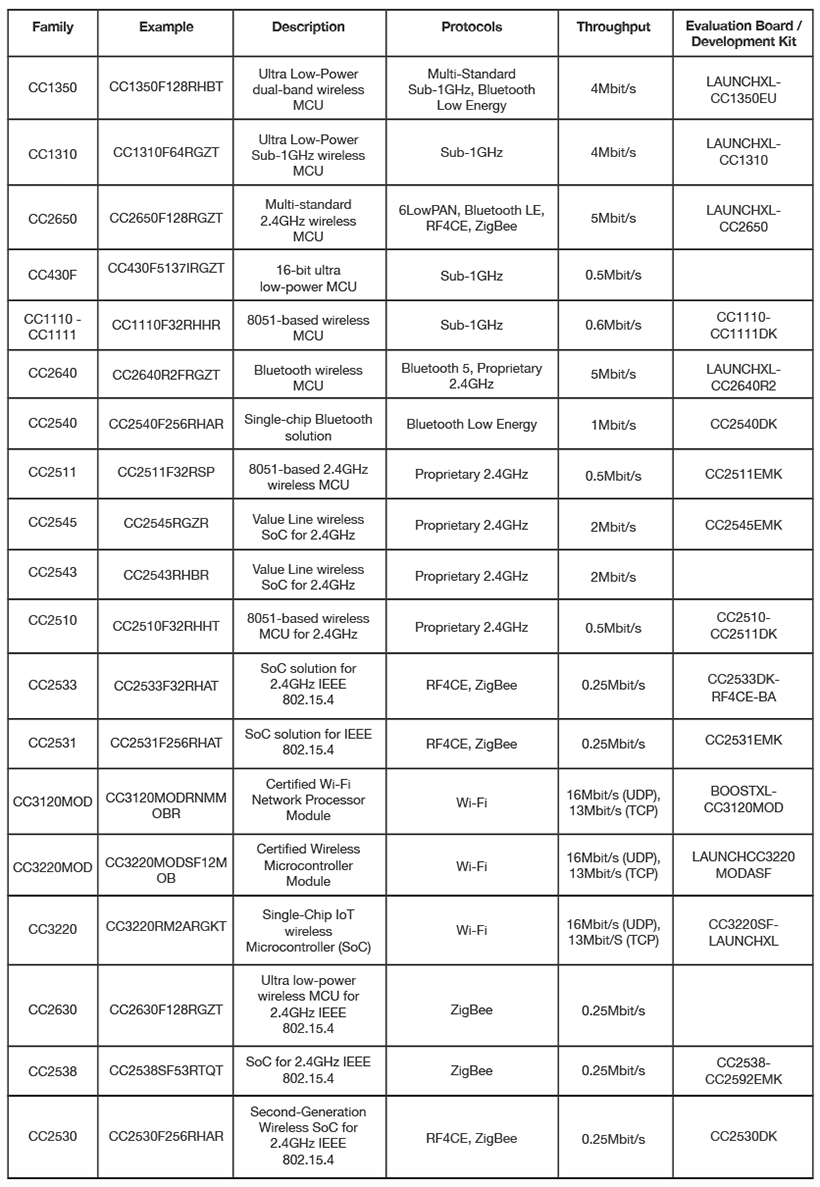Simplifying the IoT through highly-integrated wireless solutions
Wireless connectivity is ubiquitous; an invisible technology that has changed the networking infrastructure and is now enabling the IoT. The implementation of wireless data communications is achieved on many levels, and in its simplest form can exist purely as a link between two devices communicating over a short range, without the need for any kind of protocol. Increasingly, of course, applications require a more sophisticated solution that supports some form of networking between multiple devices and, here, the landscape is very different; one dominated by standards.
The proliferation of wireless communications is largely thanks to the openness of the RF spectrum. The vast majority of standard-based and proprietary protocols operate in the license-free part of the spectrum which, while open to anyone, still comes with strict restrictions in terms of operating power. Because of this, implementing a wireless connection is easiest to achieve using either technology designed to comply with an industry standard, or proprietary technology that has already been approved for use by the appropriate governing bodies.
Increasingly, it is the ability to create networks of devices that is propelling the popularity of industry standards, but in broad strokes the different technologies available can be categorised by range and bandwidth; both of which influence the operating power which is becoming an increasingly important design parameter.
Choosing a protocol
There are many protocols used in the licence-free ISM (Industrial, Scientific and Medical) and SRD (Short Range Device) frequency bands, both Sub-1 GHz and 2.4GHz. Some standards-based protocols such as Zigbee operate in both bands but for historic reasons proprietary protocols are more likely to operate in the Sub-1 GHz band. Semiconductor providers like Texas Instruments offer a wide range of solutions for wireless connectivity, from transducers to fully-integrated wireless microcontrollers (MCUs); the SimpleLink MCU Platform now supports over ten wired and wireless protocols, ensuring there is a solution to fit every application. For example, the CC13xx range of wireless MCUs includes the CC1310 device which integrates an ARM Cortex-M3 and a sensor controller with the Sub-1 GHz radio, capable of a range of 20km even when powered by a coin cell battery. This device is ideal for applications including wireless alarm systems, where the protocol used would either be proprietary or based on the TI 15.4-Stack, a standards-based star networking protocol released by TI. This is one in a family of wireless MCUs and transceivers offered by Texas Instruments.
The SimpleLink MCU Platform incudes devices based on TI’s own MSP430 16-bit core designed to operate as a host, to network processors and wireless MCUs that integrate RF transceiver(s) alongside the core offering Wi-Fi, Bluetooth and Sub-1 GHz connectivity in a single chip solution.

Fig1: WiFi and Bluetooth connectivity is part of the SimpleLink MCU Platform core offering
Know your area
Although the concept of range still exists as the maximum distance between two devices over which a reliable wireless connection can be sustained, the advent of mesh networking has rendered its relevance somewhat moot. A network of many devices connected using a short-range wireless standard can theoretically span an area many times greater than the range of one point-to-point connection. The latest version of Bluetooth, Bluetooth 5, now supports mesh networking and so, in principle, has the ability to create a single network of devices with unlimited range. However, Bluetooth has its foundations in Personal Area Networking; short-range communications between small devices with relatively low bandwidth demands.
Historically, range has been used to define the type of networking addressed by a group of technologies, such as Body Area Networking (BAN), Personal Area Networking (PAN) and Wide Area Networking (WAN). With increased support for mesh networking across many standards these terms are arguably less relevant and with the introduction of integrated solutions that require fewer system resources there is large crossover between the application areas each has addressed in the past.
While there may be no ‘wrong’ choice when selecting a wireless technology, there are still excellent reasons for choosing a particular standard for a specific application area. Range may be less crucial but bandwidth is still a major consideration, primarily because the amount of data sent/received still has a direct impact on both the power required and the complexity involved. Fortunately there is a growing number of highly-integrated solutions that successfully address both of these design challenges.
The IoT will see many devices with low bandwidth requirements, such as smart sensors, home appliances and entertainment systems, industrial control and monitoring, as well as emerging applications within the home, office and car. Here, Zigbee and its variants (including Light Link and RF4CE) provide a good mix of networking features, power demands and security, at data rates of around 250kbit/s. For applications with higher bandwidth requirements, Bluetooth becomes more relevant, offering up to 5Mbit/s. As bandwidth requirements or network complexity increase further, Wi-Fi steps in, supporting direct connection to the internet with bandwidths as high as 100Mbit/s.
Another consideration is the frequency of operation, and the choice here will be based on a combination of range, bandwidth and operating power. Many standards are capable of operating in both the Sub-1 GHz and the more common (and crowded) 2.4GHz range; often a Sub-1 GHz solution offers greater range but at the cost of bandwidth. Co-existence and resilience to a crowded spectrum may also be a design consideration, with some standards offering greater benefits in this area than others. The SimpleLink MCU Platform has solutions that address all of these use-cases, including dual-band devices like the CC1350 which integrates RF transceivers for Sub-1 GHz and Bluetooth connections in a single device (see below for more details of this family of devices).

Fig2: A network of many devices connected (e.g. in a smart city) using a short range wireless standard can theoretically span an area many times greater than the range of one point-to-point connection
Typical Applications and solutions
In many cases the application will indicate which wireless technology to use. For example, a system which includes a number of sensors distributed around a building, each of which is in direct contact with a central controller (or Gateway), might be best implemented using a Sub-1 GHz technology based on a star network; transmissions in the Sub-1 GHz range are less susceptible to attenuation by obstructions such as walls, while a star network avoids the processing overhead associated with a mesh network and would therefore allow the sensors to operate longer from a single battery.
With the right integrated solution, the low power nature of a Sub-1 GHz application of this type would allow a smart sensor to operate for as much as 20 years from a single coin cell battery. For example, the CC1310F32RGZT , part of the SimpleLink Platform, integrates three processing cores; an ARM Cortex-M3 for application code, an ARM Cortex-M0 dedicated to the radio protocol being used, and an ultra-low power 16-bit core that functions as an autonomous sensor controller.
As the IoT develops it has become apparent that a hardware platform as capable as the SimpleLink family can be extended to address more application areas. To achieve this, Texas Instruments developed a sub-range of SimpleLink devices that offer support for multiple wireless standards and interfaces running concurrently. The CC1350F128RGZT builds on the features of the CC1310 to support both Sub-1 GHz and 2.4GHz radio protocols and interfaces. This means it can be used in a Sub-1 GHz star network for ultra-low power operation, while supporting over-the-air updates using a Bluetooth connection to a smart phone or home gateway, for example.
Connecting to the world
Of course, a major part of creating an application that forms part of the IoT involves connecting it to the internet, and in many applications the wireless protocol that most easily achieves this is Wi-Fi. A Wi-Fi connection provides global access to the functionality and data of an application, however the complexity of the protocol reflects this and is consequently more challenging to implement than, say, protocols intended for private networks.
As the value of data collected through distributed Wireless Sensor Networks (WSNs) increases, manufacturers are looking for reliable yet simple ways to create WSNs and start collecting that data. In this application area, Sub 1 GHz wireless connectivity can excel in both range and power, and to assist in the development of exactly this kind of application TI has developed the TIDEP0084 reference design. It provides TI’s IEEE 802.15.4 based star network stack pre-integrated into the SimpleLink CC13x0 SDK and TI’s Linux SDK targeting Sitara processors.
The CC3120, part of Texas Instruments’ SimpleLink Wi-Fi family, has been designed to make adding Wi-Fi to an application as easy as possible. It is a self-contained network processor with a fully-integrated web server and includes the TCP/IP stack needed to connect to the internet. This level of integration takes most of the processing burden off of a host processor, which can subsequently be a relatively simple microcontroller. Alternatively, the CC3220 provides even greater integration by including an ARM Cortex-M4 core dedicated to running application code. This allows a complete internet-ready device to be developed with a single-chip solution. Texas Instruments also takes into consideration security concerns seen in the growing IoT space. This latest generation of Wireless Microcontroller provides multilevel security features that enable developers to protect their products against hostile takeover, as well as IP and data theft.
The latest revision of the specification sees Bluetooth 5 now supporting mesh networking, as well as an increased bit rate of up to 5Mbit/s. With the same low power credentials, it means Bluetooth can now be used in a wider range of applications that need a more direct internet connection, with the added benefit of greater range through the use of mesh networking. One of the first parts to support Bluetooth 5 is the CC2640R2FRGZT wireless MCU from TI. It is part of the company’s CC2540 SimpleLink Bluetooth low energy wireless MCUs with support for USB. Table 1 details all of TI’s wireless MCUs that cover Sub-1GHz, proprietary 2.4GHz, Bluetooth, ZigBee, 6LowPAN and Wi-Fi.
The internet is enabled through the Internet Protocol, or IP; one of the latest wireless standards to provide IP functionality is 6LowPAN, as defined by the Internet Engineering Task Force. With full support for IPv6 on all nodes in a network It is perhaps the most future-proof of all wireless technologies, as it can operate in either the Sub-1GHz or 2.4GHz frequency bands and on a number of physical layers. One popular implementation of 6LowPAN is using the IEEE 802.15.4 physical layer (as used by ZigBee). Many of Texas Instruments’ SimpleLink devices support the IEEE 802.15.4 physical interface and so can be used to implement both ZigBee and 6LowPAN networks.
The IoT will be dominated by low power wireless technologies. In addition to those already mentioned, engineers are anticipating the wide scale availability of solutions targeting one of the latest protocols in this exciting and rapidly evolving application space; Thread. Unlike most other wireless technologies, Thread has been developed with just one objective; to provide a way to connect and control devices in the home. This mesh networking technology has also been designed to promote interoperability, by using open standards based on 6LowPAN; essentially it can be realised through a software ‘upgrade’ to an existing 802.15.4 platform. In order to better support Thread, in 2018 TI will be launching its own Thread SDK (Software Development Kit), which will initially target a new wireless MCU; the CC26x2. For a sneak preview, visit www.ti.com/tool/simplelink-cc26x2-sdk. The SDK will include support for the Thread 1.1 networking protocol, based on an open source version of the stack, called openthread.
The IoT will be dominated by low power wireless technologies. In addition to those already mentioned, engineers are anticipating the wide scale availability of solutions targeting one of the latest protocols in this exciting and rapidly evolving application space; Thread. Unlike most other wireless technologies, Thread has been developed with just one objective; to provide a way to connect and control devices in the home. This mesh networking technology has also been designed to promote interoperability, by using open standards based on 6LowPAN; essentially it can be realised through a software ‘upgrade’ to an existing 802.15.4 platform. In order to better support Thread, in 2018 TI will be launching its own Thread SDK (Software Development Kit), which will initially target a new wireless MCU; the CC26x2. For a sneak preview, visit www.ti.com/tool/simplelink-cc26x2-sdk. The SDK will include support for the Thread 1.1 networking protocol, based on an open source version of the stack, called openthread.
Conclusion
Harnessing the capabilities of wireless connectivity has never been easier, thanks to highly integrated single-chip solutions and the availability of royalty-free software (including protocol stacks). The range of devices available covering all of the major standardised wireless protocols is now significantly accelerating the development of IoT applications.

Table 1: A comparison of wireless solutions
Simplifying the IoT through highly-integrated wireless solutions. Date published: 15th February 2018 by Farnell element14